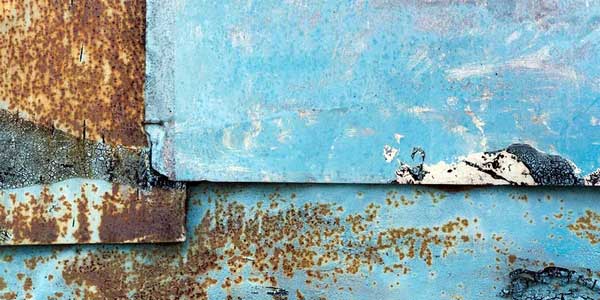What are Corrosion Inhibitors?
Corrosion inhibitors (CI) provide a certain resistance to corrosion and reduce the corrosion rate or prevent a substance from corroding.
(CI) do not stop corrosion but help in reducing the corrosion rate
Corrosion inhibitors are chemicals that help reduce the rate of corrosion in a material without significantly changing the concentration of a corrosive agent. Corrosion inhibitors are effective in small concentrations, and help reduce the rate of corrosion by significantly varying the pH of the material, or by scavenging oxygen and hydrogen sulfide that react with metal, and by removing aggressive species from the solution. Corrosion inhibitors are abbreviated as CI.

Different types of corrosion inhibitors
Corrosion inhibitors are classified into four types: cathodic inhibitor, anodic inhibitor, volatile corrosion inhibitor and mixed inhibitor.
Cathodic inhibitors
Cathodic inhibitors are used to reduce the corrosion rate by slowing the reduction reaction rate of the electrochemical corrosion cell. They either slow the cathodic reaction by themselves or selectively deposit on the cathodic area to increase the surface impedance and limit the diffusion of reducible species to this area. The nature of cathodic inhibitors depends on the material to be protected or the agents to be neutralized. Examples of cathodic inhibitors are cathodic poisons, cathodic precipitates, and oxygen scavengers.
Anodic inhibitors
Anodic inhibitors resist corrosion by forming a protective oxide film on the surface of the metal. They change the anodic reaction into a chemical cell, forcing the metal surface into a passivation zone. The mechanism involves blocking anodic spots and this depends on the concentration of the inhibitor. At low concentrations, the inhibitor first blocks weak anodes and protective films are not fully formed. But as the concentration increases, inhibitors react with the strong anodes, forming a passive layer and reducing the corrosion rate. Some examples of anodic inhibitors are chromium, molybdate, nitrite and orthophosphate.
Volatile Corrosion Inhibitor
Volatile corrosion inhibitors are added to the surface of a paper and these papers are used to protect metal. Metals are coated with this paper, the chemicals evaporate slowly and release compounds into a sealed air space which helps in preventing surface corrosion of the metal. This provides metals with great short term protection against corrosion. Volatile corrosion inhibitors are also known as vapor corrosion inhibitors. Some examples of VCI are aliphatic, aromatic, cyclohexylamines, aminonitrobenzene and hetero-alkylated lower amines. They are used to reduce the rate of corrosion in condenser tubes in boilers.
Mixed inhibitors
Mixed inhibitors are compounds that form a film and reduce both cathodic and anodic reactions. The most commonly used mixed inhibitors are silicates and phosphates. They are used in domestic water softeners to prevent the formation of rust water.
Mechanism of corrosion inhibitors
Corrosion inhibitors basically work on one of the following mechanisms..
- Chemisorption - the inhibitor is chemically absorbed on the surface of the metal and forms a protective thin film layer with inhibiting effect or by combination between the inhibitor ions and the metal surface.
- Formation of a thin film of oxide by the inhibitor that protects the base of the metal.
- Reaction of the inhibitor with a potentially corrosive component present in aqueous media and the product is complex.
- By using cathodic toxicants, cathodic reactions are reduced to adapt to the anodic reactions.
- Dissolving oxygen by means of oxygen scavengers reduces the corrosion rate. Sulfite and bisulfite ions are used as oxygen scavengers that lead to the formation of sulfates during the reaction with oxygen.
- Cathodic precipitates are formed by the absorption of zinc, calcium and magnesium. They form a protective layer that prevents corrosion, especially in anodic reactions.

Applications of Corrosion Inhibitors
- They are used in oil and gas production to reduce corrosion caused by the presence of acidic gases.
- Amine based corrosion inhibitors are commonly used in industrial lubricants, greases and rust preventive fluids.
- Benzotriazole is a corrosion inhibitor used specifically for copper and copper alloys. It is widely used in industry to reduce corrosion of copper alloys under both atmospheric and submerged conditions.
- For cooling water systems, CI forms a protective film of calcium carbonate on the metal surface using the natural calcium and alkalinity in the water.
- They are used to dissolve scale in pipes to prevent them from corroding the pipes.
- Sodium silicate, a corrosion inhibitor, is used in many domestic water softeners to prevent the formation of rust water. In aerated hot water systems, sodium silicate protects steel, copper and brass.
- Nitrite ion is a good corrosion inhibitor for copper surfaces due to its low electrophilicity value.
- Imidazoline and quaternary amine compounds are the best corrosion inhibitors in oil and gas production systems.
Effective method for using corrosion inhibitors
Corrosion inhibitors are used to reduce and control the rate of corrosion. They provide resistance to corrosion either by chemisorption or by forming a thin protective layer. But to use these inhibitors correctly, we must identify the type of corrosion and then use the inhibitor most suitable for that type of corrosion.